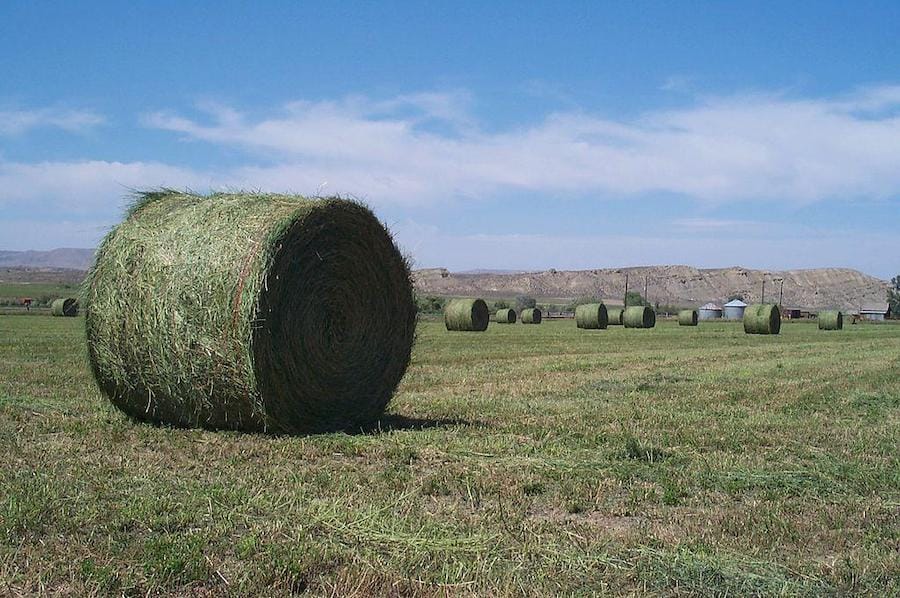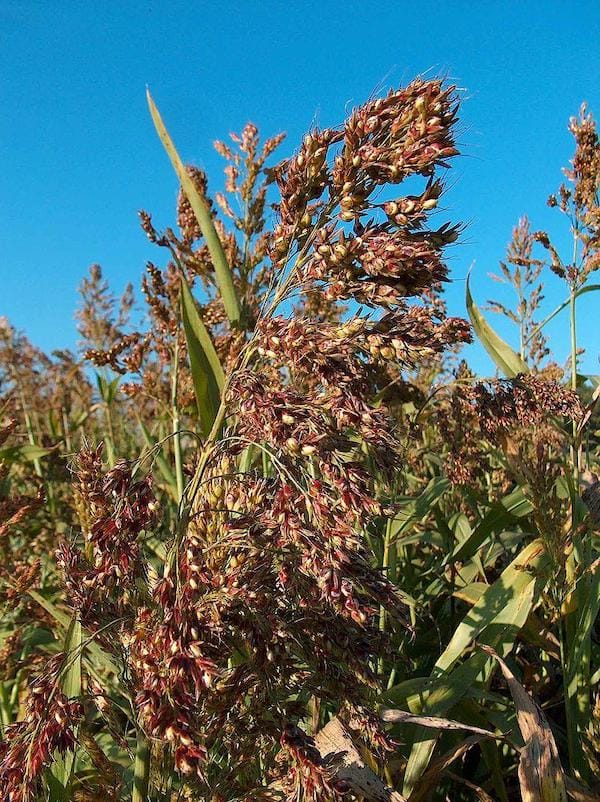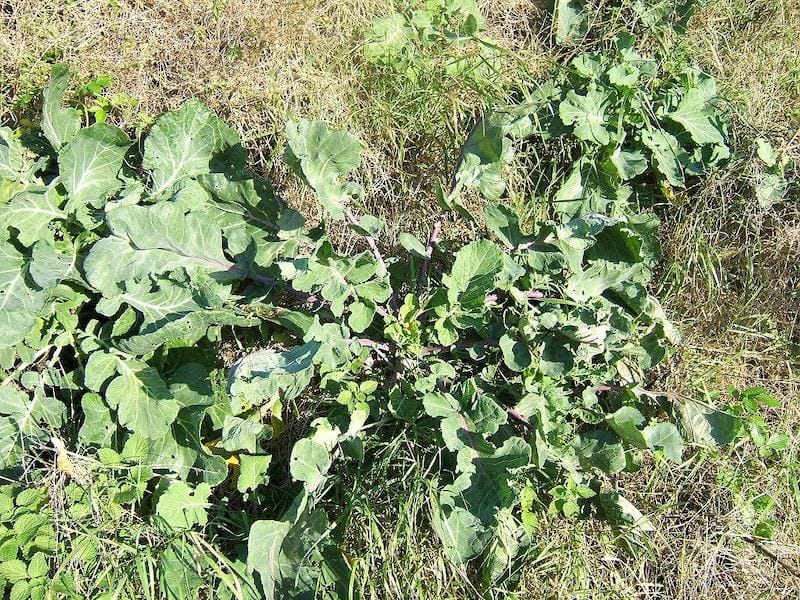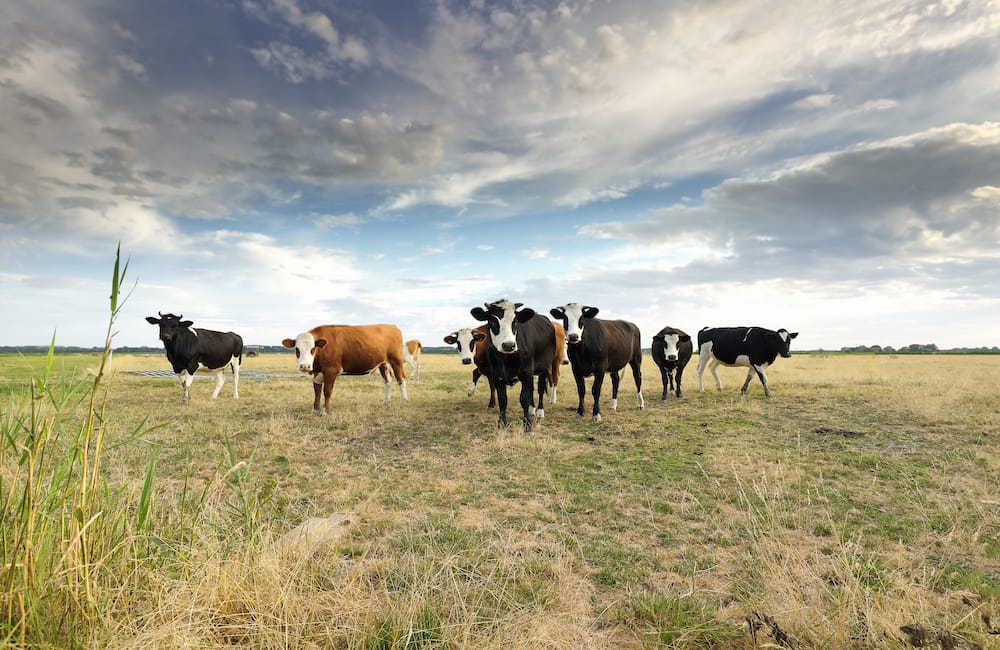Mixing in summer annuals along with your pasture can offer several advantages.
One, it improves your pasture composition and helps you transition your pasture to meet your goals. Towards a more high-yielding, more perennial or native pasture composition.
Two, it can help you provide high energy feed for lactating cows during the peak calving season in spring and summer. And this can improve your overall production. Not to mention supercharge your grazing management.
And more importantly, summer annuals can help you extend your grazing season right into late-autumn. In this article, let's see more about this.
But first things first, you need to start in spring.
Why do you need to plan in spring?
I know. Your pasture is doing very well in spring. You’re probably getting more surplus yields from your pasture, much more than what your animals need on a daily basis.
Yet, I repeat that you should plan to extend your grazing in spring.
Why? I’ll give you three solid reasons. Because:
- You’ll fall short of pasture in autumn and winter when your pasture yields are lowest. So it would help if you boosted your yields to even out this slump.
- Summer annuals that can extend your grazing season will take about 45 to 60 days to get established. So it would help if you had the early head start.
- Summer yields can significantly drop with heat stress, drought or lack of irrigation capacity. So it would be best if you took pro-active measures to prevent this.
That’s why you need to plan in spring, how you want to transition your pasture over the coming summer and autumn seasons. Plan when the sun is out, the grass is high, and the birds are chirping.

There are several ways in which you can meet your summer and autumn shortfall:
One is to reduce your stocking rate. Forage growth will get ahead of grazing animals in spring, but animals will be able to graze selectively, and there will be more forage for later in the growing season. This is a viable option for some livestock operations. However, animal production per hectare will be low.
Or dairy producers can graze heifers behind lactating cows in spring. By prioritizing which animals get maximum nutrition, you might be able to reduce the grazing impact and in turn, achieve better pasture growth later in the season.
Or you could consider earmarking a few paddocks specifically not to be grazed at all during spring when you're pasture is most productive. And then use those fields for grazing in summer. This can help you reduce your summer grazing impact on your pasture, provide longer rest periods for your pasture and in turn, help you achieve better yields in autumn.
However, you’ll get the biggest bang for the buck by using summer annuals, because this won’t require dropping production or sacrificing grazing opportunities. Instead, when you use summer annuals, you will end up with more summer yields that can then be used across autumn or even winter.
What summer annuals can you use?
When you search for summer annuals on your favourite search engine, you are bound to stumble upon the following three categories:
- legumes such as alfalfa, cowpea and soybean
- hardy millets and hybrids such as sudangrass
- other forage crops such as brassicas and corn
Of course, you can mix and match your own summer pasture species. But to do that well let’s see what each of these three categories have to offer:
Leguminous summer annuals:
Adding tropical warm weather legumes such as alfalfa, cowpea, soybean and groundnut to your pasture can result in a win-win-win situation. Because they do well in the warm weather, increase overall yields, provide quality crude protein for your animals and store well as hay or silage.

Millets and hybrid grasses:
Millets are incredibly hardy crops that can tolerate a high degree of heat stress. This is why they are extensively grown in the hot tropics of Asia and Africa, where most other crops can’t do well.
Millets such as foxtail millet, pearl millet, proso millet and sorghum (aka great millet) all offer high yields greater than 8,000 Kg DM/ ha in summer conditions. But even more importantly, they offer excellent nutrition value. And also store well as hay.
Sometimes millets are crossed with other warm-season grasses for fodder purposes. The best-known example is hybrid sorghum-sudangrass. We thought this deserved a separate article, so we've written about it here.

Other summer forage crops:
In addition to all the above-mentioned crops, you could also consider forage crops like wild brassicas and corn. Why? Because they tolerate heat to a certain extent and have a very high energy value.
Brassica crops include turnips, rape, typhoon and kale. The primary advantage of these crops is that they remain green and lush in the fall after most forage crops go dormant. So, they can produce good animal feed on pasture at a time when other forage crops are of relatively low quality.
However, not all animals instinctively take a liking to them and might need some training before they start relishing brassicas.

Other forage crops like corn also provide an excellent opportunity, because your animals can graze the residues, husks and leaves after the summer harvest. This can provide you with a valuable grazing window in early autumn. And allow your paddocks the must needed rest it deserves. This might allow you an extra round of grazing, before peak winter sets in.
How can these summer annuals extend your grazing season?
There are primarily five ways that you can use these summer annuals to extend your grazing season. You can use them as grazing pastures, green chop, hay, silage or as emergency forage.
Let’s look at all these options in more detail:
Summer annuals as pasture or emergency forage
Summer annuals such as sudangrass and pearl millet are excellent pasture options because they are quite leafy. They can provide a reliable supply of feed and support high levels of production. For best results, graze these summer grasses in a short, rotational grazing system of about ten days.
So consider staggering your planting in each pasture by about ten days so that your animals can graze all pastures when growth is at the appropriate height, usually around 20 inches tall. That way, you'll be able to get maximum yields.
However, if you have more than what your animals need and growth reaches more than 36 inches, then you can consider harvesting them as hay, green chop, or silage to avoid significant wastage. That’s next.
You can also consider earmarking a few summer annual paddocks as emergency forage rations. You wouldn't want to graze these paddocks until run out of feed or pasture. This can give you the much-needed respite and buffer in case of any emergency.
Summer annuals as green chop
Warm-season legumes, hybrids like sorghum-sudangrass and most millet species can function well if you choose to employ a green chop program. This can offer several advantages.
Firstly, chopping results in a more controlled harvest with lesser wastage. Secondly, you can precisely determine the residual level to maximize regrowth. An excellent green chop program will help you get three or sometimes even four cuts.
However, there are also a few disadvantages. Mature grasses that are above 24 inches tall contain lesser crude protein. Some species are also less palatable when mature. Also, green chop feed might have a lot of nitrites if not appropriately managed. This can be a source of toxicity.
But good species selection and harvest management can help you overcome these challenges.
Summer annuals as hay or silage
Forage sorghum and other millets are frequently planted for hay or silage, across the world. In general, this silage can have about 60 to 80 per cent of the energy value of corn silage per unit of dry matter.
Most summer annuals need to be wilted or even on occasions mixed with dry feeds to make good silage. The best hay and silage are the ones harvested right after the first frost sets in because this is when the annuals will have the least amount of moisture.
Cutting short can give you the most harvest yield. However, you might choose to leave behind about eight or so inches of stubble. Why? Because that can help you quickly dry out your harvest and reduce the risk of nitrate/ nitrite poisoning. Taller residual stubble also encourages quicker regrowth.
As you know, the primary difference between hay and silage is its moisture content. Hay has around 15% moisture content, while silage can have moisture levels as high as 70%.
To make hay, you might need to use a hay conditioner to quicken the drying process. Even then, it will generally take several days for your harvest to dry down to satisfactory moisture levels, around the 15% mark.
And as far silage is concerned, your harvest is ready to be stored in silos once it reaches moisture content levels below 70 per cent. However, you can also consider further drying or adding dry feed to your harvest. This will reduce the overall moisture level as well as make the silage more palatable.

Can summer annuals poison my animals?
Prussic Acid:
Summer annuals such as sudangrass, sorghum-sudangrass hybrids, and forage sorghum contain a chemical that breaks down and is released as prussic acid (hydrocyanic acid). This is found in higher doses among young plants. Mature plants tend to have less prussic acid.
So as long as you avoid feeding hungry animals young, succulent feed of these grasses – you’re pretty much safe. Allow plants to reach about 20 inches before grazing. Also, researchers haven’t found prussic acid in other summer annuals such as teff or pearl millet.
Nitrates and Nitrites:
Summer annual grasses can have high levels of nitrates. This isn’t a problem unless animals begin to graze the lower third of plant stem. So ensure that you leave a residual stubble of around 8 inches.
Also, nitrates can become an important factor when you use summer annuals in a green chop or hay program. Because humidity and decaying can turn nitrates into nitrites, which is ten times more potent as a source of toxins.
To sum it up, don’t leave you green chop for too long before feeding. And as long as you practice common sense harvest and feeding practices you’re fine.
When in doubt, you can always put the harvest into storage silos where bacteria help break down the nitrate content by up to 60 per cent.
Until we meet again, Happy Farming!
- The Dedicated Team of Pasture.io, 2020-10-06